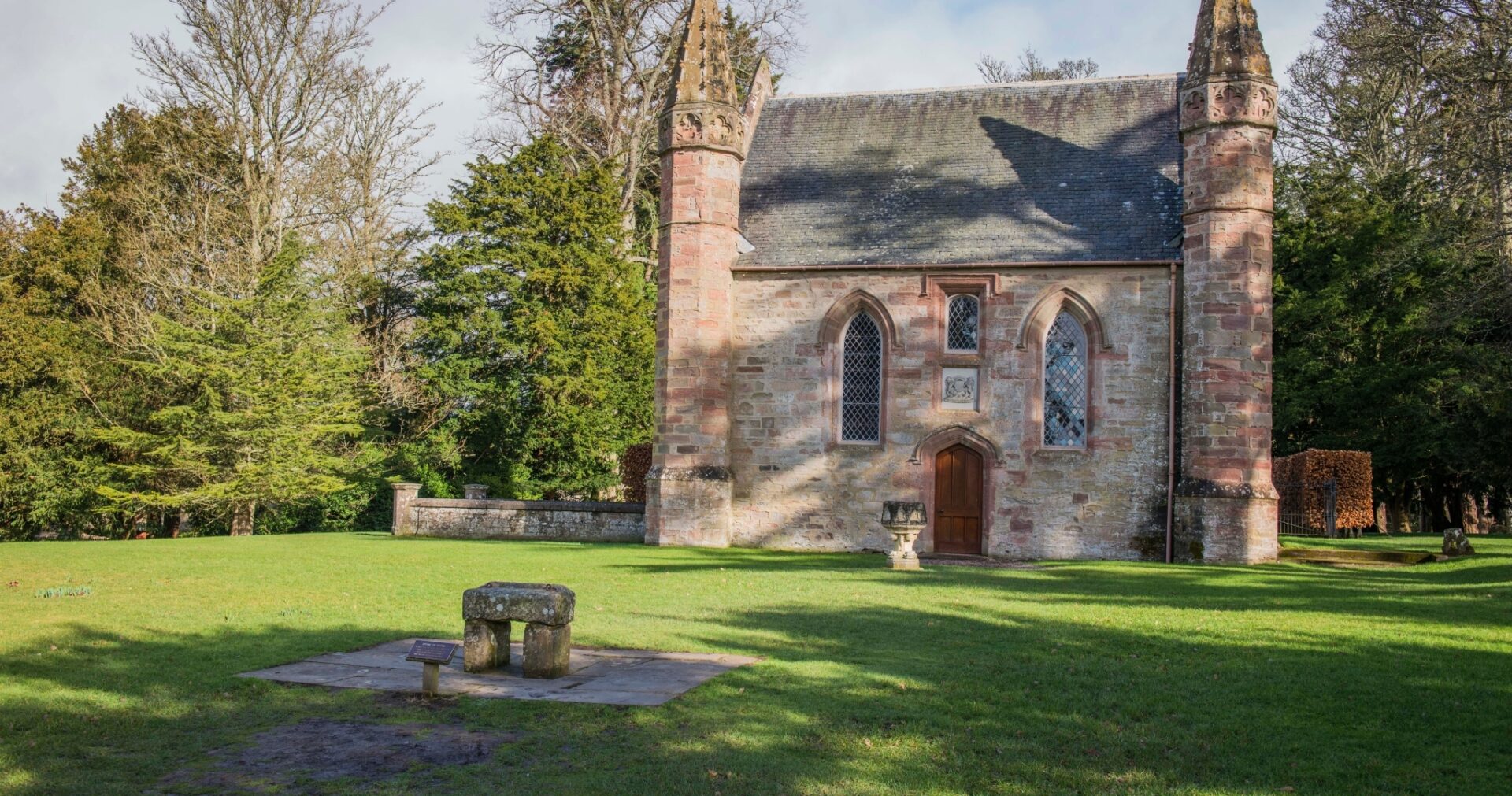Today, Moot Hill is one of the most important historical sites in Scotland. As you look out from its raised position, you can see north towards the highlands and over to the Grampian Mountains that stretch across the skyline. In 297, the Picts were the first people to appreciate the geographical location of Scone, making it the capital of their kingdom, known as Pictavia. In the 7th century, another group of people came and settled here, known as the Culdees. They were followers of St Columba and they built a monastic community here at Scone, one which would last for 500 years. During the Middle Ages, Scone continued to flourish as a place of religious significance. In 1114, King Alexander I founded an Augustinian priory beside Moot Hill, which 55 years later, would be elevated to the status of abbey, a place befitting the crowning of kings.
But Moot Hill is not just a site of religious importance; it has a political history too. In 906, King Constantine II held the first ever council here. This was the forerunner to the medieval parliament which was established between 1284 and 1452, after which it was moved to the newly built Palace of Holyroodhouse, built by King James IV. In the tree hangs a bell. The sound of a bell ringing out from Moot Hill would have been familiar, as it rang out to announce the passing of a new law. In time, the bell of Scone became synonymous with the expression ‘law of the land’.
Today, Moot Hill is more widely known as the crowning place of Scottish kings. The first monarch to be enthroned here was Kenneth MacAlpin in 843. It is Kenneth I who bought the Stone of Destiny to Scone, thus establishing it as the site of coronations in Scotland until 1296. During those years, many Scottish kings were inaugurated here; Macbeth in 1040, Robert the Bruce in 1306 and Charles II in 1651, who was to become the last monarch crowned here at Scone. It is believed that the name Moot Hill was derived from an ancient practice that took place amid the early crowning ceremonies. During those turbulent and perilous times, it would have been unwise for any monarch to undertake long journeys to other parts of his kingdom, and so his noblemen would come to him, carrying a sample of soil from their own lands in their boots. This would be tipped out onto the mound as a sign of their allegiance.
Taking centre stage, on the top of Moot Hill is a replica of The Stone of Destiny. The original stone is now on display in the Perth City Museum, having moved there in 2024 from Edinburgh Castle, where it was housed since it was returned to Scotland in 1996. But during its five centuries at Scone, it was kept in the monastic church and only brought out for enthronements. The stone itself is shrouded in mystery. Some people suggest that the original stone was Jacob’s Pillow, brought from the Holy Land via Spain, Ireland and the west of Scotland. Wherever the stone came from, there is little doubt that it remains a symbol of great power and continues to be the subject of debate and intrigue.
During its lifetime, the stone has been stolen many times, and possibly even replicated. In 1296, Edward I of England was unhappy with the way John Balliol, the King of Scotland, was showing signs of rebellion. And so, Edward I marched north and seized what he believed to be the stone and took it back to Westminster. Once there, Edward I had a coronation throne designed, one which would house the stone underneath the seat. This throne will be a familiar sight to many of you as it is still used today. We have a copy of the coronation throne, last used by King Charles lll, in the Lennox Room within the palace.
Behind Moot Hill, opposite the front steps of the palace, is the 16th century archway, which is all that remains of the approach to the old abbey. The ancient abbey once rose above the lawns before you. Beyond the ancient wall, the old village of Scone bustled with life around the Mercat Cross, before its inhabitants were laid to rest in the graveyard nearby.
